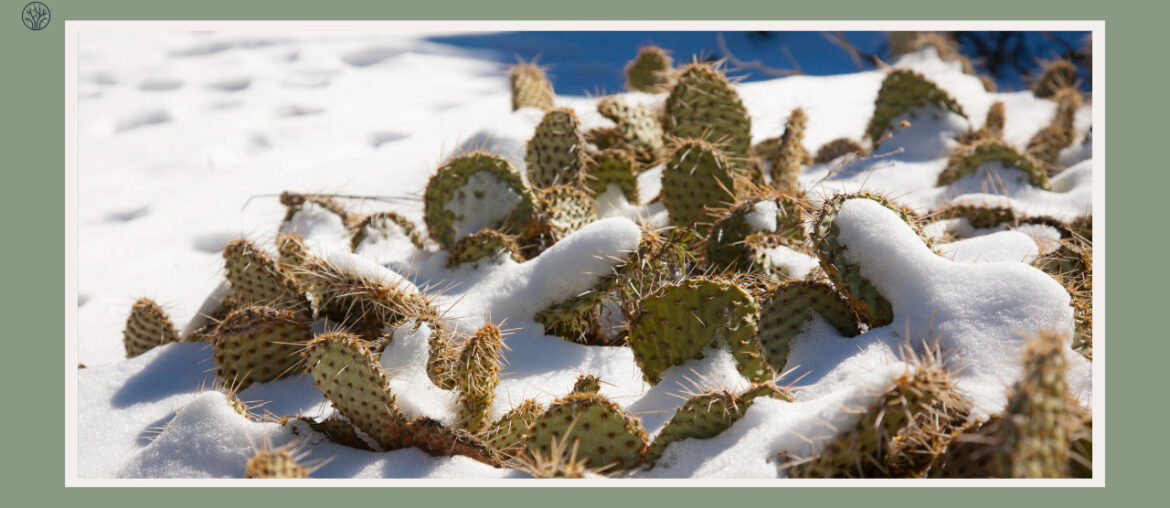Cactus are amazing plants that can survive in some of the most extreme environments on Earth. They can thrive in the hot and dry deserts, but what about the opposite? Can cactus survive the winter?
The answer is yes, but not all cacti are equally adapted to the cold. While some cacti can tolerate low temperatures and even snow, others are more sensitive to frost and might need a little help.
In this blog, we will introduce you to 11 cacti that can survive the winter and give you some tips on how to help your prickly buddies during these cold times.
Key takeaways
- Many cacti hibernate during winter, which helps them save water and nutrients.
- Keeping cacti in the right temperature range (usually between 35°F to 50°F) during winter is vital.
- Even in winter, cacti need sufficient sunlight. A south-facing window can provide the necessary light for indoor cacti.
- It’s important to water cacti sparingly, allowing the soil to dry out completely between watering sessions.
- While some hardy cacti can survive outdoors in winter, many must be brought inside or given extra protection.
Ferocactus
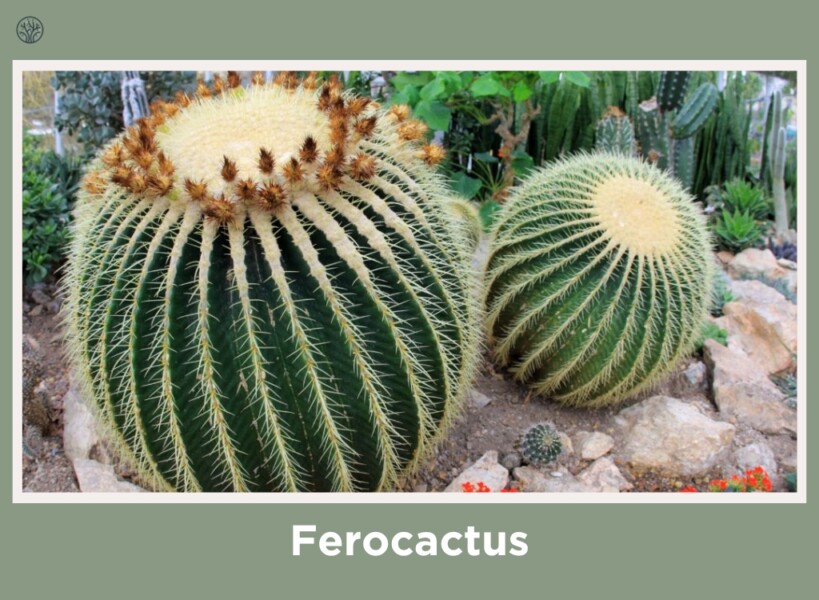
Ferocactus, or “barrel cacti”, has round or cylindrical shape that look like big green balls. They have strong ribs and long, sharp spines that cover their surface. These cacti produce colorful flowers and grow in dry areas in the Americas. Some facts about Ferocactus are:
- Temperature Tolerance: This cactus can survive winter temperatures of as low as 20°F (-6°C).
- Sunlight Requirements: These cacti prefer full sun exposure.
- Watering Guidelines: During winter, you should only provide them with a modest amount of water.
- Soil Preferences: Well-draining soil is a must for these cacti.
- Care Tips: In particularly cold weather, consider using a frost cloth as a protective measure for these cacti. This extra step can help ensure their health and longevity.
Echinopsis
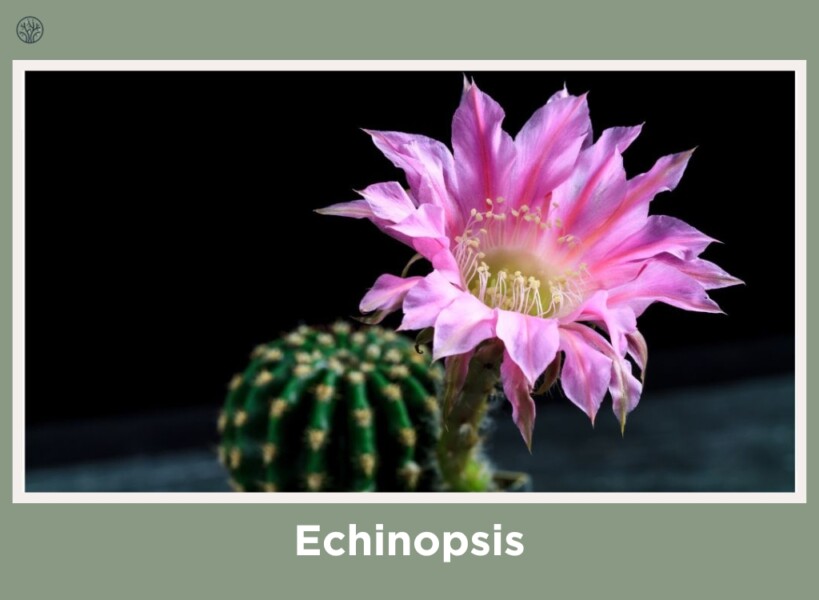
Echinopsis cacti are commonly called “sea urchin cacti” since they do look like the animal with the same name. They have a rounded to elongated shape and often grow in South America. Their flowers, which can be quite large in comparison to the body, bloom in various colors.
- Temperature Tolerance: Echinopsis can survive winter, but this cactus prefers mild chill over deep freezes, staying comfortable down to about 30°F (-1°C).
- Sunlight Requirements: They love the sun but are grateful for some afternoon shade.
- Watering Guidelines: Reduce watering in colder months and allow the soil to dry completely between sessions.
- Soil Preferences: A well-draining cactus mix suits them best, keeping wet roots at bay in winter.
- Care Tips: If temperatures drop significantly, these cacti make excellent indoor companions.
Oreocereus
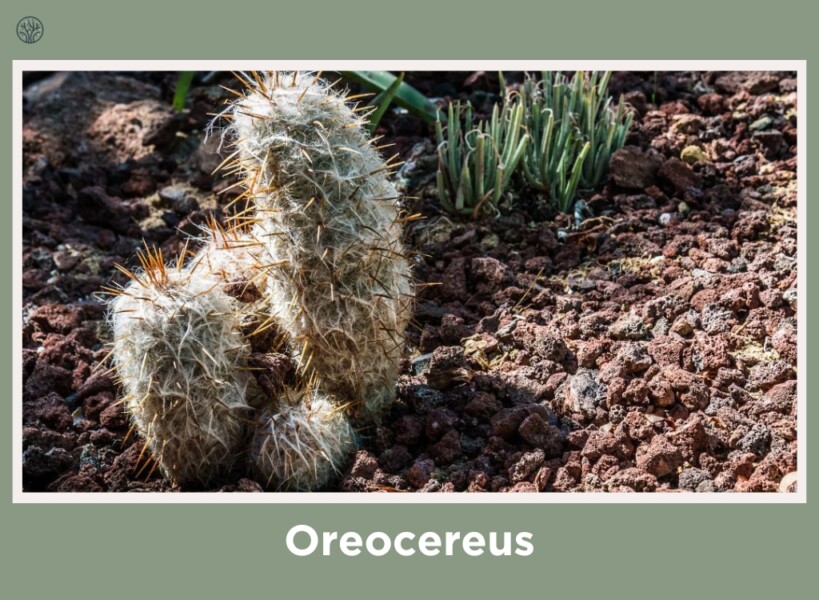
Oreocereus cacti look like the “old man of the Andes” with their hairy spines covering their columnar stems. They live in the high mountains of the Andes, where they can handle cooler and wetter conditions than most cacti.
- Temperature Tolerance: True to its high-altitude roots, this cactus can survive winter temperatures of as low as 20°F (-6°C).
- Sunlight Requirements: Full sun is ideal for these cacti.
- Watering Guidelines: Cut back on water in winter to mimic their natural hibernation period.
- Soil Preferences: They favor well-draining, gritty soil.
- Care Tips: Protect them from rain in wet winters.
Opuntia
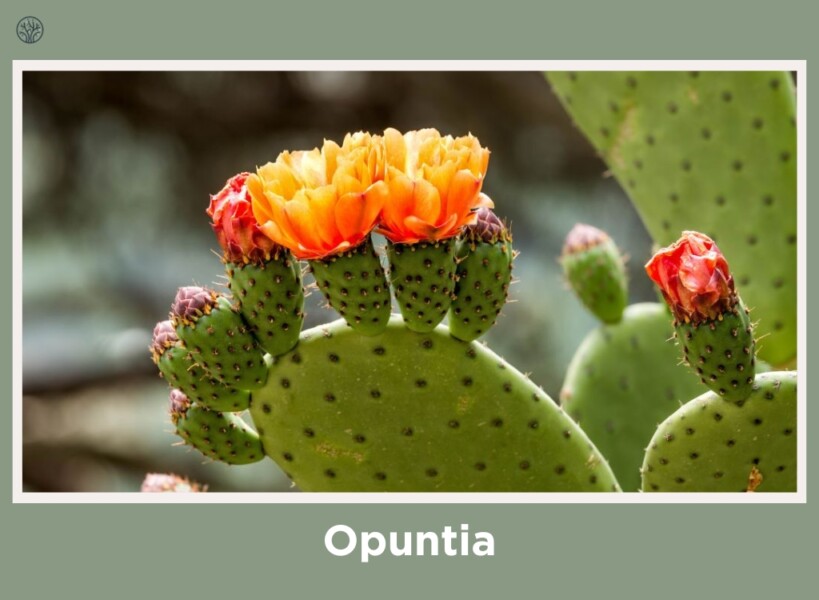
Opuntia cacti are also called “prickly pears” for their spiny and edible fruits. They have a unique shape with flat, round pads that often have spines and barbs. They thrive in many parts of the Americas.
- Temperature Tolerance: This cactus can survive winter temperatures down to 10°F (-12°C).
- Sunlight Requirements: They flourish in full sun.
- Watering Guidelines: Keep watering minimal in winter, letting the soil dry out completely.
- Soil Preferences: Well-drained soil is essential.
- Care Tips: In harsh winters, provide shelter or mulch around the base for root protection.
Cylindropuntia
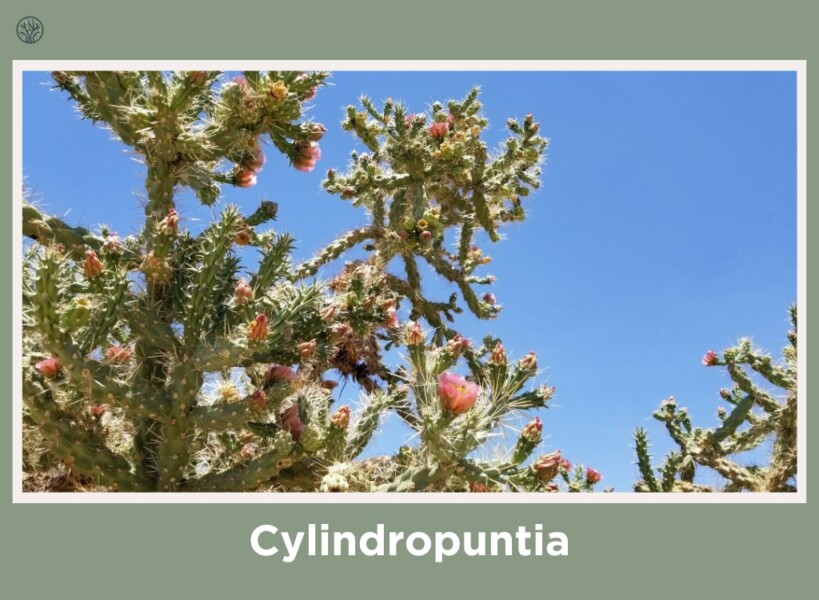
Cylindropuntia cacti or “cholla” have segmented branches and cylindrical stems. They are covered in spines and can easily drop segments. They are native to the American Southwest and northern Mexico.
- Temperature Tolerance: These cacti tolerate temperatures down to 15°F (-9°C).
- Sunlight Requirements: Full sun is preferred.
- Watering Guidelines: Water lightly during winter.
- Soil Preferences: They thrive in fast-draining soil.
- Care Tips: Use a frost cloth in extremely cold weather for extra warmth.
Echinocereus
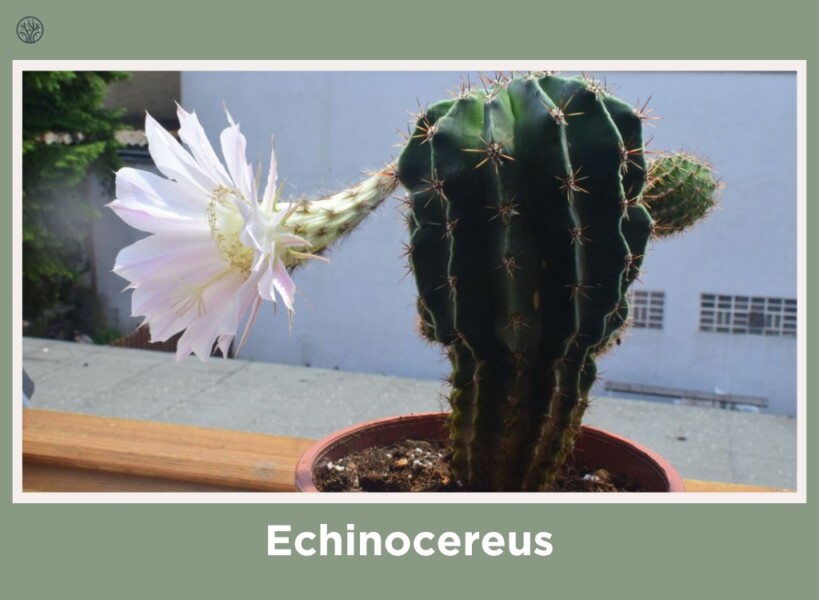
Chinocereus cacti or “hedgehog cacti” are famous for their cylindrical shape and dense spination. They are small to medium-sized cacti that often produce bright, showy flowers. They are native to North America.
- Temperature Tolerance: Most can withstand temperatures down to 20°F (-6°C).
- Sunlight Requirements: Sunny spots bring out their best colors.
- Watering Guidelines: Allow the soil to dry completely before winter watering.
- Soil Preferences: A well-draining mix is crucial.
- Care Tips: In cold or wet climates, consider bringing them indoors.
Escobaria
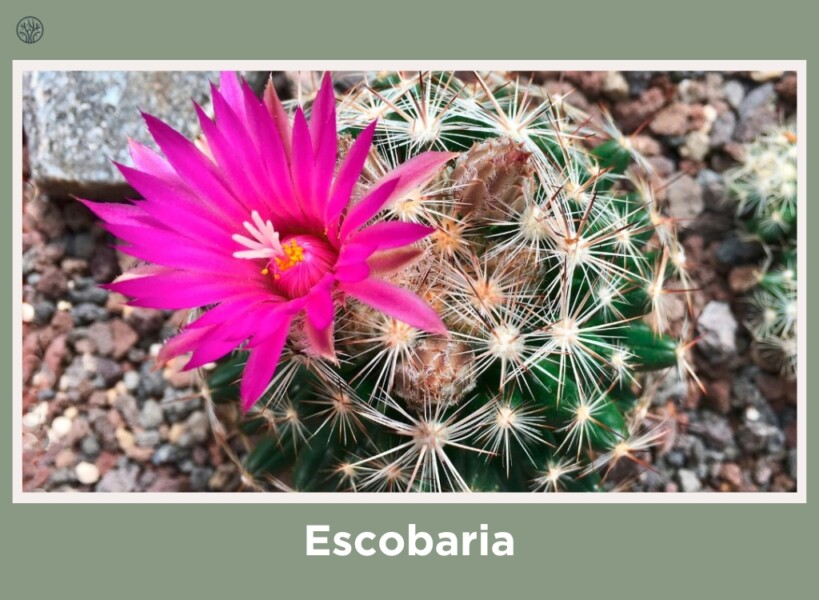
Escobaria cacti or “foxtail cacti” has small, globular shape and clustered growth. They have dense spines and small flowers, and are native to North America, especially the United States and Mexico.
- Temperature Tolerance: Some species can tolerate temperatures as low as 0°F (-18°C).
- Sunlight Requirements: They thrive in full sun.
- Watering Guidelines: Water sparingly in winter.
- Soil Preferences: Well-draining soil is a must.
- Care Tips: Provide extra protection in harsh winters, like a frost cloth or indoor placement.
Eastern Prickly-Pear Cactus
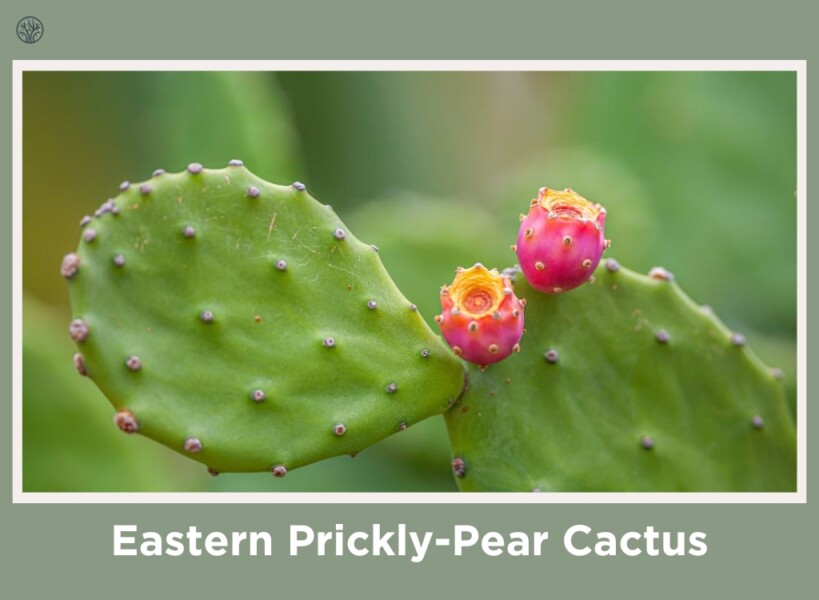
The Eastern Prickly-Pear Cactus, or Opuntia humifusa, is notable for its wide, flat pads and yellow flowers. It is native to the eastern United States and can adapt to different environments.
- Temperature Tolerance: It withstands temperatures down to -20°F (-29°C).
- Sunlight Requirements: Full sun is ideal.
- Watering Guidelines: Keep watering minimal and let the soil dry out completely.
- Soil Preferences: Choose a well-draining soil mix.
- Care Tips: In extreme cold, mulching can help ensure survival.
Brittle Prickly-Pear Cactus
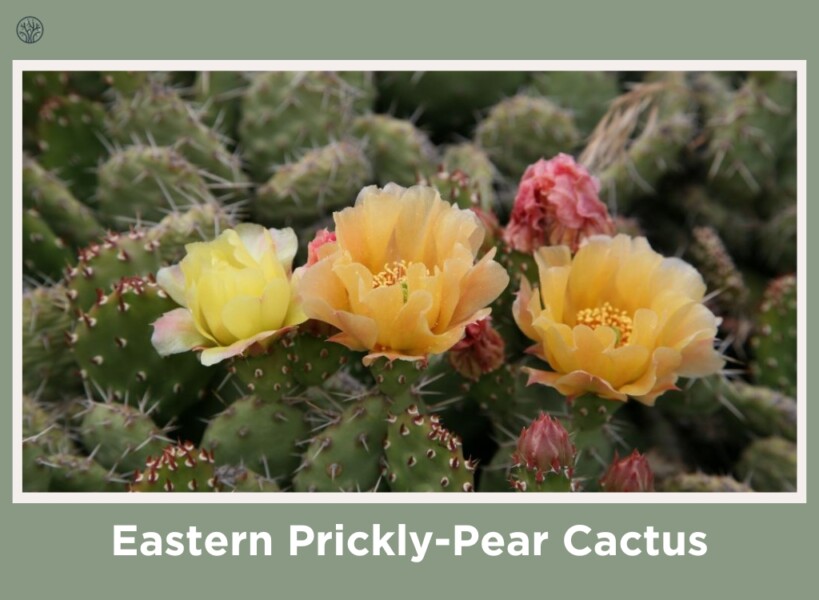
The Brittle Prickly-Pear Cactus, or Opuntia fragilis, is famous for its small size and easily detachable pads. It has yellow flowers and can survive in cooler climates. It is found in various parts of North America.
- Temperature Tolerance: It tolerates temperatures down to -30°F (-34°C).
- Sunlight Requirements: Full sun is preferred.
- Watering Guidelines: Minimal watering is recommended.
- Soil Preferences: Well-drained soil is necessary.
- Care Tips: Provide extra protection in extreme cold, like mulching.
Barrel Cactus (Echinocactus Grusonii)
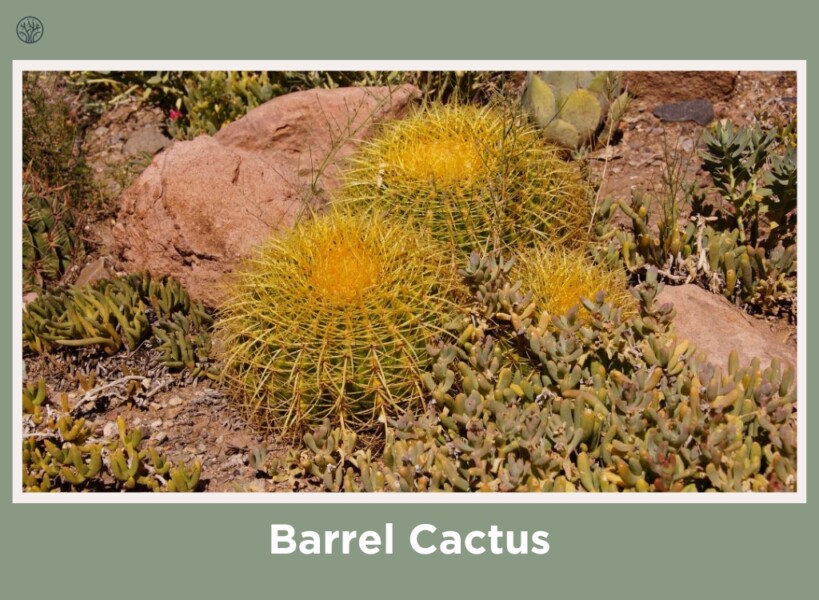
Echinocactus grusonii, or the “Golden Barrel Cactus,” has a distinctive, rounded barrel shape and is covered in yellow spines. It is a popular ornamental plant and native to Mexico.
- Temperature Tolerance: This cactus can survive winter temperatures at about 20°F (-6°C).
- Sunlight Requirements: Full sun is best.
- Watering Guidelines: Reduce watering significantly.
- Soil Preferences: A well-draining cactus mix is essential.
- Care Tips: Shelter or indoor placement is recommended in harsh winters.
Beehive Cactus (Escobaria Vivipara)
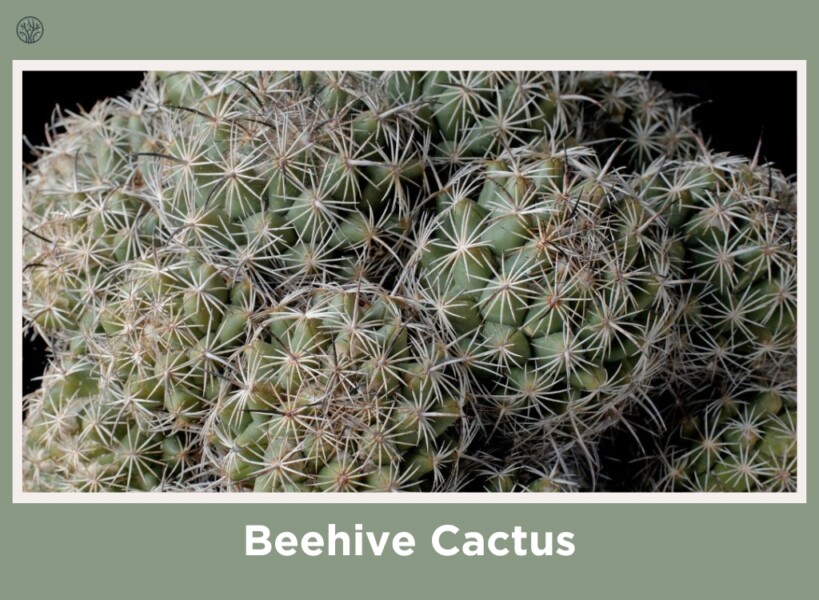
The Beehive Cactus, or Escobaria vivipara, is a small, globular cactus with a pattern resembling a beehive. It has dense spines and vibrant pink or purple flowers. It is commonly found in the United States and Canada.
- Temperature Tolerance: It withstands temperatures as low as -20°F (-29°C).
- Sunlight Requirements: Full sun is ideal.
- Watering Guidelines: Cut back on watering in winter.
- Soil Preferences: Well-draining soil is preferred.
- Care Tips: In cold or wet climates, extra protection like a frost cloth is beneficial.
How Do Cacti Survive The Winter?
Winter brings many challenges, but cacti are masters of resilience and adaptability. These plants, known for their harsh, sun-drenched deserts, have evolved to survive and often thrive in the cold. Let’s take a closer look at their survival tactics.
The Art Of Winter Dormancy
The key to a cactus’s winter survival is its ability to enter a state of dormancy. Much like animals that hibernate, cacti drastically reduce their growth and metabolic processes during winter. This dormancy period is a strategic pause, saving energy and vital resources during a time when they are scarce. During these months, a cactus’s need for water and nutrients drops significantly, allowing it to survive even when the environment offers little.
Natural Antifreeze and Water Storage
A crucial part of a cactus’s survival toolkit is its ability to store water. These plants are experts at hoarding moisture in their tissues during the warmer months, creating a reservoir to draw from during winter’s dry spell. Their thick, waxy skins are not just for show; they play a vital role in minimizing water loss and providing insulation against the cold.
Interestingly, some cacti have substances within their cells similar to antifreeze. This natural antifreeze prevents the cell’s internal fluids from freezing, thus avoiding damage from frost. This adaptation is especially important for cacti growing in regions where temperatures drop below freezing.
Sunlight Affinity and Root Adaptations
Despite their slowed metabolism during dormancy, cacti still seek sunlight. Those that receive enough sunlight in winter maintain better health and resilience. Sunlight, even the weaker winter rays, is a crucial energy source, supporting their limited physiological activities during this period.
The root systems of cacti are another wonder of adaptation. Typically shallow yet spread wide, these roots are designed to quickly absorb moisture from winter rains or melting snow. This efficient water uptake ensures that cacti make the most of the limited water available during the cold months.
Essential Winter Care Tips for Cacti
Winter can be tough for cacti, but with the right care, these resilient plants can flourish even in the cold. The key is to change their care routine to match the seasonal changes.
Ensuring The Right Temperature
The right temperature for cacti during winter is vital. They like a cooler environment, which matches their natural dormant state. Cacti can tolerate much lower temperatures than fern and ideally, they would prefer a spot that stays between 35°F to 50°F (1.6°C to 10°C) is perfect. It’s important to protect them from frost, especially if they are outdoors. A cool garage, basement, or a less-heated room can provide the ideal conditions for their winter rest.
Keeping Your Cactus Dry
Watering too much in winter is a common watering mistake in cactus care. During their dormant period, cacti need much less water. The rule of thumb is to water only when the soil is totally dry. This approach helps prevent root rot, a common problem in colder, wetter conditions. In areas with higher humidity, using a dehumidifier can help create a more suitable environment for these desert plants.
Winter Care for Indoor Cacti
Caring for indoor cacti in winter involves making sure they get enough light and are kept in cooler conditions than in the warmer months. Putting them near a south-facing window where they can soak up the winter sun is ideal. Lowering the temperature in their environment helps to simulate their natural dormancy, and like their outdoor friends, indoor cacti should be watered lightly during this time.
FAQs
Can my cactus stay outside in winter?
This is a big question that depends on a few factors. Some cacti, like certain types of Opuntia (Prickly Pear), are hardy enough to handle freezing temperatures, so they can still survive outside. However, you need to check the hardiness of your specific cactus type and the lowest temperature in your area. If you’re not living in the Arctic, your cactus might be fine outside, but it might need some protection, like mulching or a frost cloth, especially if it gets very frosty.
What temperature is too cold for a cactus?
Most cacti start to get unhappy at temperatures below 32°F (0°C). Some cacti can take much lower temperatures, but you need to know your cactus’s specific limits. If you’re unsure, it’s better to bring them indoors when temperatures start getting close to freezing.
How do you keep a cactus alive in the winter?
Keeping a cactus alive during winter involves making sure it gets enough light, is kept cool but not cold, and is watered properly. This means watering less often and ensuring the soil is dry before watering again.
Can cacti survive winter in pots or indoors?
Cacti can definitely survive winter in pots or indoors. It’s important to make sure they are potted in well-draining soil and placed in a spot where they get enough sunlight. Indoor cacti benefit from cooler temperatures during the winter to mimic their natural dormant period.

